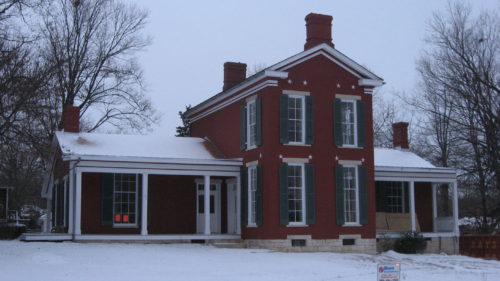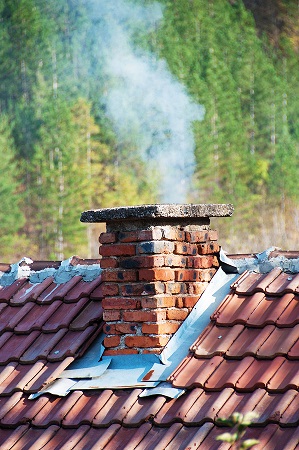Tips to Prepare Your Chimney for Winter Weather
 You may be looking forward to warm fires this coming winter, but don’t forget to prepare your chimney. The safe operation of your fireplace or stove depends largely upon the condition of your chimney. Thousands of emergencies occur every year due to lack of maintenance. Harsh weather conditions can be tough on chimneys, as well. It’s important to make sure your chimney is prepared for winter inside and out.
You may be looking forward to warm fires this coming winter, but don’t forget to prepare your chimney. The safe operation of your fireplace or stove depends largely upon the condition of your chimney. Thousands of emergencies occur every year due to lack of maintenance. Harsh weather conditions can be tough on chimneys, as well. It’s important to make sure your chimney is prepared for winter inside and out.
Prevent Hazardous Fires
Maintenance of your venting system can help prevent dangerous chimney fires and out-of-control house fires. There are approximately 25,000 chimney fires each year in the U.S. These intense blazes cause more than $120 million in property damage. If there is a hazardous buildup of creosote in your chimney, there is an increased chance of a chimney fire. It’s not uncommon for debris, such as leaves and twigs, to fall into a chimney flue. Debris in the chimney can also result in a raging fire.
A damaged chimney liner allows high temperatures to reach combustible materials in walls and attics. When these materials ignite, the resulting fires are often deadly. With an annual chimney inspection, you can find out whether your chimney liner is in good condition or is in need of repair or replacement before winter.
Prevent Carbon Monoxide Dangers
Chimney blockage prevents toxic fumes from exiting through the chimney and can result in deadly carbon monoxide poisoning. Common chimney obstructions include outside debris, excess creosote, and materials from deteriorating chimneys and flue liners. Carbon monoxide is odorless and invisible, which is why it’s often called the Silent Killer. It’s important to have a carbon monoxide alarm on each level of your home, in addition to ensuring that your chimney is in good working order.
Install a Chimney Cap
Some potential debris problems are solved by installing a chimney cap. In addition, a chimney cap prevents moisture from getting inside your chimney system. In fact, installing a chimney cap is the best strategy for preventing moisture damage, according to the Chimney Safety Institute of America. When your chimney cap has wire mesh, animals are prevented from getting inside your chimney. The wire mesh also serves as a spark guard that can stop hot embers from causing rooftop fires. If you already have a chimney cap, it should be inspected for signs of damage.
Inspect Chimney Flashing
Before the arrival of rooftop snow and ice, make sure your chimney flashing is doing the job of protecting your roof from moisture. The metal flashing on a chimney is not as durable as other components. A small rusted nail may be all it takes to cause leakage and major roof damage. The flashing and chimney itself are highly susceptible to deterioration caused by excess water. It may be a good idea to install a cricket on your roof to divert water away from the chimney.
Inspect Masonry
 When built correctly, chimney masonry can be expected to stand strong for a century or more. The mortar that holds it all together, however, is not as durable. Mortar may need to be replaced every 25 years or so. When the mortar is cracked and flaking, moisture gets into the chimney system. Freezing and thawing cycles cause the masonry to break off, which is called “spalling.” Tuckpointing is a procedure that replaces damaged mortar and gives a chimney a fresh new look. There could also be cracks in the masonry that need to be addressed before winter.
When built correctly, chimney masonry can be expected to stand strong for a century or more. The mortar that holds it all together, however, is not as durable. Mortar may need to be replaced every 25 years or so. When the mortar is cracked and flaking, moisture gets into the chimney system. Freezing and thawing cycles cause the masonry to break off, which is called “spalling.” Tuckpointing is a procedure that replaces damaged mortar and gives a chimney a fresh new look. There could also be cracks in the masonry that need to be addressed before winter.
Consider Waterproofing
You can contact our experts to apply a waterproof seal to your chimney exterior. Moisture can wreak havoc on a chimney, especially in harsh winter weather. Waterproofing your chimney allows the masonry to breathe while helping to keep out damaging moisture.
Contact our chimney technicians for a chimney inspection and repair of any existing damage. We have the expertise to prepare your chimney for even the harshest of winters.


